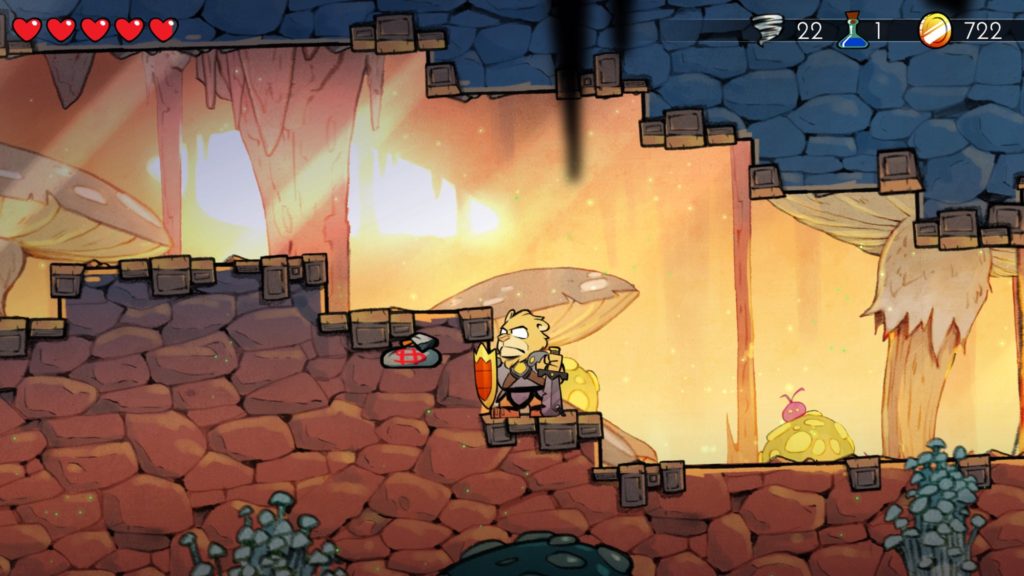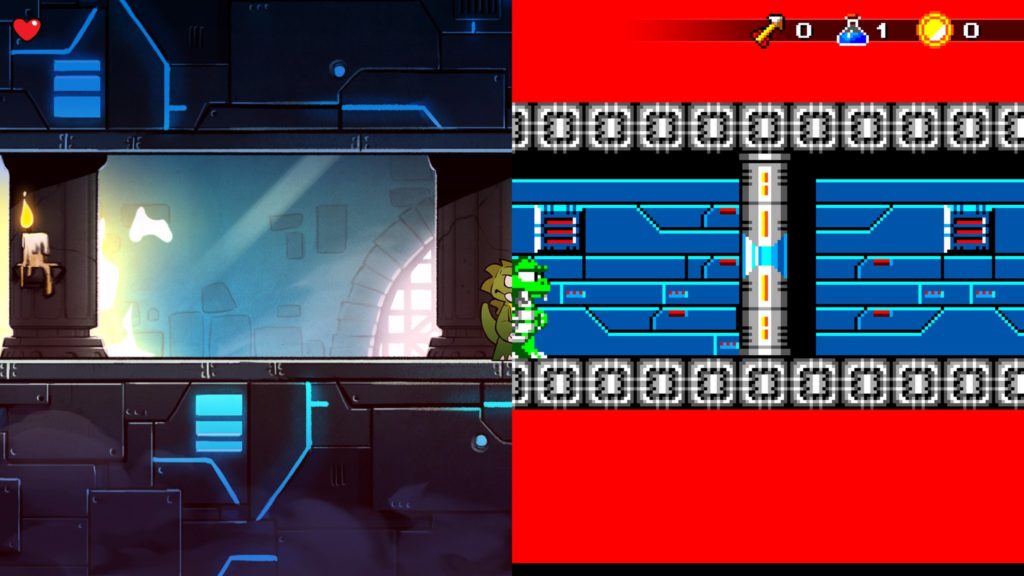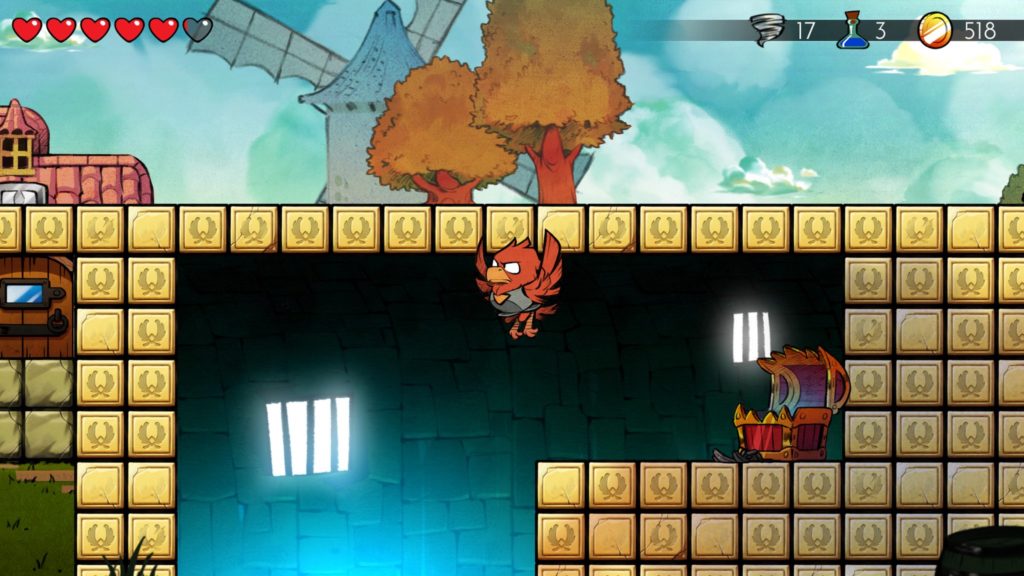- Genre: Platformer
- Platform: PS4
- Also Available On: Switch, Xbox One, Windows, Linux, Mac
- Original Version On: Sega Master System, Game Gear, TurboGrafx-16
Right from the start I could see that this game is a lovingly made remake of Wonder Boy III. This remake feels like the original, if the original was made in 2017 with fantastically drawn visuals. While that means that it doesn’t lose its original charm, it also means that it carries some finicky mechanics from the late 80s with it. However, the quality of the original still comes through, and being able to play it without having to break out the old consoles is still worth the experience, and the polish in place to transition between the old and new is absolutely impressive.

The most obvious thing that’s been changed here are the visuals. Rather than going the easy route and sticking with an upgraded 8-bit Master System style, DotEmu went all out with a full visual refresh of the original game. Every character, NPC, and world area has been redrawn over the original geometry, maintaining the original gameplay space, but giving it a fantastically modern look. If it wasn’t for Cuphead finally being ready to release, this one would probably be a runaway winner for me in terms of flat out best looking pure 2D platformer.

However, the more impressive trick is that you can go between the original and modern looks at any time, and most importantly, the original sprites maintain the aspect ratio of the remake on modern platforms, giving a nice mix between the look of the old and the practical functionality between the two. You simply press R2, the screen wipes side to side, and you’re right in the old style without having to pause the game. This can also be done with R3, changing the music between the old and new, giving you the option to mix and match your preferred styles for sound and visuals at any time. This is particularly important, because it has some surprising gameplay ramifications as well.

One of the biggest issues I continued to have was that the hit boxes in modern style were not that precise to the actual visuals of the character. In some cases they matched pretty well to the general shape of the enemies, but in a lot of cases they were often much smaller than I was expecting. For single enemies this wasn’t a huge deal, but for packs of enemies, it meant I was often swinging and missing, then getting stuck in situations where I would take a lot of unnecessary damage. However, the hit boxes in the original game were generally much more precise, so by the tail end of the game, I was often switching to the old visuals purely for collision convenience, and minimizing my damage taken simply due to the more instinct-precise way of attacking.
Mechanically speaking, there’s also a few warts that were fine in the 80s, but at this point are kind of just moderate annoyances. There’s a lot of situations where enemies can stun lock you into corners and walls. While I wouldn’t take damage after a hit until I finally landed, it was annoying getting endlessly juggled into a corner until an enemy decided to finally turn around and back off. For the bosses, they were mostly fairly trivial as well, with each boss generally having one attack and a single hit zone that was generally placed in the most obnoxious place to attack, while trying to avoid relatively quick and low damage attacks. Jump physics are generally fairly precise, but mid-air control is definitely not as good as some more modern takes on the genre like Shovel Knight. Generally speaking, this was a pretty high quality game mechanically when it originally came out, and the remake benefits from being able to start with that solid base. While everything here is still pretty solid, it definitely plays like an 80s game, for better or worse.
All that said, this is a great take on an older title. In doing the port, they avoided the trap that a lot of remakes do in trying to reimagine an old title. This one is as straight a gameplay port as I’ve ever seen, particularly since the old title runs permanently emulated in the background. The modern visuals and audio, as well as the fantastic feature to switch to the originals in real time is a nice touch that I wish more remakes would take advantage of. End of the day, if it comes down to breaking out an old console, or playing this remake on a modern platform, I’d say throw out the few bucks and go this way, it’s worth it just for the visuals.


